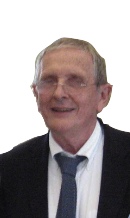Robin Matthews is professor at universities in London and Moscow; consultant with international companies; writes on business, economics; and finance: creative imagination techniques in management.

Time's Arrow: Boltzman Miller Eliot and Kant
THE ARROW OF TIME
BOLTZMANN MILLER, ELIOT and KANT
An event.
A colleague makes a toast to the future, for visitors. He says that other toasters (is that a word?) had spoken of the past, but he, 21st century man, will speak about the future. A future that unlike the past, is unknown. We’ve had our lives, and our time, let’s look to the future, in the direction of the arrow of time, to our children, and grandchildren. All said and done, though he didn’t say exactly this; they are all our sons [children].
Let’s follow time’s arrow, and contemplate what may emerge as it curves into a malleable future, and toast to high hopes.
We could say everything is an unknown ancestor or relative.
So what distinguishes past from future is not whether they are unknown or not, both are unknown. The past is already travelled. And the past hypothesis says that time is irreversible. That’s the distinction.
We could also say that time present and time past are both perhaps present in time future, and time future contained in time past. ... [They] point to one end, which is always present. In memories certainly, time is reversible, and events are concurrent, more or less.
But ignore the present for the moment. It’s already past and gone, in less than the blink of an eye.Let’s return to the past hypothesis, the arrow of time and the entropy law.
A flimsy hypothesis.
On a statistical mechanics, or Boltzmann entropy interpretation of time, as an arrow, pointing from the past to the future, we rely on the past hypothesis; the hypothesis that the entropy of a universe always increases, always moving from order to disorder.The entropy law applies to closed systems, and the universe, whether infinite or not, is a closed system. The past hypothesis is something like a Kantian a priori, a synthetic statement that is true regardless of any empirical backing; an a priori statement, in this case, that time reversal is impossible. Zero probability. Not highly improbable, but impossible.
The arrow of time is founded on the high probability that the total entropy of a closed system will increase, and the low probability that the will decrease. It is a statement, similar to saying that a cup of white coffee, elbowed off a table, and spilt on the floor, can magically jump back on the table, and re-constitute itself into the cup, or, indeed that the reconstituted cup of coffee can reverse itself into milk inside the cows udder and the coffee beans in the plantation. Or, but even more statistically, vanishingly, probable, spilt coffee may reconstitute itself into ancient history. Increasingly unlikely but never impossible.
And, if the universe is infinite, every statistically possible thing or event in space-time, happens, including the reversal of time and the arrow of time curving into an unknown and toast high hopes to malleable past.
What is present? Where and when did the toasts happen? What was toasted? Who listened?
Difficult to make toasts to visitors these days.
David Boje
Hi Robin, good to converse with you
I think what you way can be applied to business-as-usual futuring of climate action. So much of it is confining the future to the past, in entropy.
Still it is possible to have futures arriving that we care about, prepare in advance to manifest. We have about a decade to get greenhouse gas emissions down to zero, or there are some nonlinear effects, some tipping points that make business-as-usual come to its end.
I keep wondering if we wasted our lives in business schools whose was committed to fulfilling business-as-usual, dressed up in greenwashing.
David https://davidboje.com
Monday December 2 2019 16:01